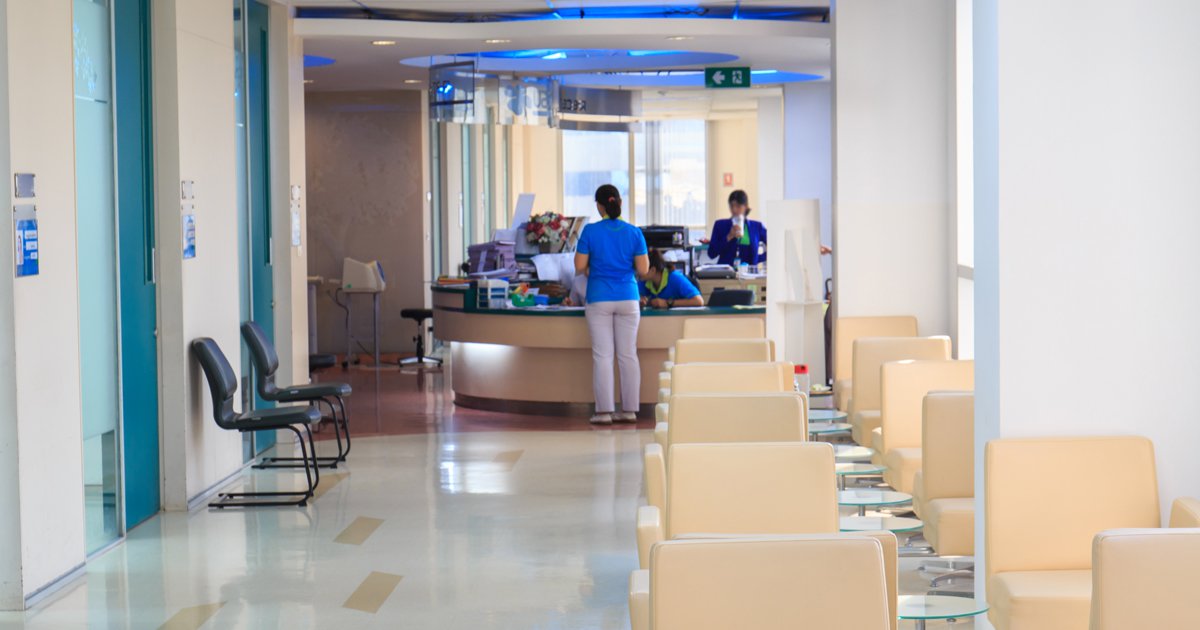February 06, 2019
3 min read
 This article is more than 5 years old. Information may no longer be current.
This article is more than 5 years old. Information may no longer be current.
‘Simple, Inexpensive’ Intervention Improves Patient Punctuality

Jed Colt Cowdell
Adjusting the patient scheduling process improved patient punctuality as well as patient and provider satisfaction, according to findings recently published in Quality Management in Health Care.
“As health care providers we need to be constantly evaluating our practice and looking for ways to optimize flow (ie, minimize waste) and hopefully improve patient safety,” Jed Colt Cowdell, MD, MBA, of the division of community internal medicine, Mayo Clinic, Jacksonville Florida, told Healio Primary Care Today.
Thus, researchers tried two “simple and inexpensive” interventions to improve patient punctuality. In the first, patients were called the day before their appointment and reminded to arrive 15 minutes before their appointment. In the second, patients were told their appointment time was 15 minutes prior to what the physician had in his or her personal calendar.
Researchers found with the first intervention, 25 of 44 patients (57%) arrived 15 minutes early based on their check-in time. With the second intervention, 153 of 182 patients (84%) arrived 15 minutes before the time the physician had in his or her personal calendar — a 20% improvement vs. patient punctuality prior to study initiation.
They also found that after 3 months of “widespread implementation” of the second intervention, 85% of patients were punctual and 79% were ready for the physician on time, leading researchers to conclude this intervention had a more positive outcome. The first approach was not continued because it did not meet pre-established criteria for proceeding.
Cowdell acknowledged the second intervention was not without its professional hiccups.
“There was some confusion with implementation of the second intervention as this was a system change that involved multiple groups. Thus, despite our best efforts not everybody was on the same page at first. It took multiple rounds of communication to providers, schedulers and patients until it became the new standard,” he said in the interview.
Cowdell added that though change in long standing office procedures can be difficult, sometimes it is worth the risk.
“I understand that change is hard, but health care is evolving at a rapid pace and if providers want to exceed the needs of their patients while also meeting the requirements of third-party payers then it may be helpful to reflect on their current practice and see if there are opportunities to optimize their workflows. If they do decide to make a change, I would utilize the tools taught in quality improvement to give themselves the best opportunity for success,” he said. – by Janel Miller
Disclosures: The authors report no relevant financial disclosures.
Perspective
Back to Top
Alan Dow, MD, MSHA
Though Einstein never had to traverse a modern primary care office, he might have appreciated aspects of Cowdell et al’s study to improve timeliness in the primary care setting. Their application of quality improvement methods to this important clinic problem is admirable for its systematic and scientific approach. In addition, it is an example of the type of work the American Board of Medical Specialties requires for Part IV of Maintenance of Certification. Yet, borrowing from Einstein’s concept of relativity and thinking about the different perspectives on time might help us rethink this project and make future work even better.
First, notably absent from the beginning of the project was the perspective of patients. Including patient satisfaction in follow-up was commendable, but initially integrating the patients’ viewpoints in the project may have been beneficial. With patients, the authors could have created a more comprehensive list of causes and identified potential solutions that may have been more promising and sustainable. For example, an “unpunctual” patient may have planned to be on time only to be waylaid by challenges in parking or navigating a large facility. Similarly, asking patients to come early may lead to initial success, but, over time, patients may recognize there is a time cushion and begin arriving later. Engaging patients in understanding a problem and devising solutions may provide the perspectives to best understand and solve a problem.
Second, the new perspective most needed in this study is to reconceptualize primary care as a team-based activity for both practitioners and patients. The authors emphasize the importance of team-based care when they write: “the need to ensure accurate and updated data regarding patient characteristics and screening measures … requires time to ensure it is recorded and documented appropriately.” Yet, they fail to relabel visits as being with the entire team and not just the physician. While they worry about deceiving patients about the timing of the physician visit, a more positive view of their scheduling intervention would be to state that each visit is with the clinic team and includes 15 minutes of critical work —vital signs, medication reconciliation, and screening — before the physician interaction.
Rethinking time in primary care is all about perspective — the perspective of the physician, of the team and of the patient. Cowdell and colleagues begin to unravel these mysteries and give us a blueprint for how modern approaches to quality can be applied to improve the timing of outpatient care. Building on this work can help us further think differently about the primary care visit and how best to collaborate with each other and with patients to shape time within the busy universe of primary care.
Alan Dow, MD, MSHA
Assistant vice president of health sciences for interprofessional education and collaborative care, Virginia Commonwealth University
Healio Primary Care Today editorial board member
Disclosures: Dow reports no relevant financial disclosures.
Published by:




